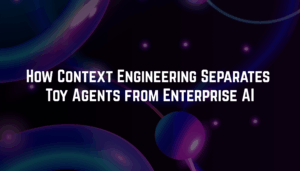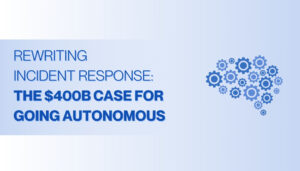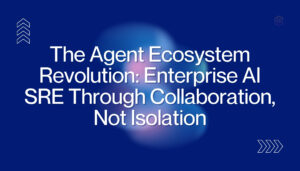The Age of Agentic Workflows Has Begun
Why Enterprises Must Embrace Agentic Workflows—and Diversity of Thought in AI Agents
Enterprises are entering a new era—one not defined by dashboards and scripts, but by agentic workflows. In this world, AI agents don’t just generate responses—they act, decide, and reason. And the best ones do it with surgical precision.
At NeuBird, we’ve spent a few years building such an agent. Hawkeye, our agentic AI SRE, is designed to operate in the chaos of IT telemetry, where more data is not just noise—it’s a liability. Hawkeye, available through the Azure Marketplace, was built from the ground up by SREs for SREs, with three core principles that define what an enterprise-grade agent must be:
- Surgical Data Selection: Enterprises don’t lack data—they drown in it. But LLMs have a memory (context window) limit. The real challenge is not generating an answer, but finding the right context to reason with. Hawkeye’s core IP is in isolating the most relevant telemetry, fast—whether it’s logs, alerts, metrics, or traces—and ignoring the rest.
- LLM-Powered Reasoning: Once the data is selected, Hawkeye reasons through it step-by-step, probing for causality, correlation, and historical patterns. This isn’t simple summarization—it’s the diagnostic loop an SRE would follow, encoded in AI.
- Runbooks from Real Experts: Agents need guidance. Ours is driven by runbooks created by seasoned IT operators. These aren’t generic rules—they’re distilled expertise, tuned to enterprise reality.
This week Microsoft announced a wave of AI agents designed to solve real business problems—spanning IT operations, security, sales, and more. Among them was the Azure SRE Agent—a natural addition to Microsoft’s growing agent ecosystem. The bigger story isn’t just one agent. It’s Microsoft’s broader commitment to the age of AI agents—and to building the open agentic web. Their support for Agent-to-Agent (A2A) protocols is especially noteworthy. With A2A, agents can securely exchange context, combine reasoning, and validate each other’s decisions—bringing more reliable outcomes and greater confidence in automated workflows.
It’s a vision we at NeuBird share. We’ve long believed that enterprises won’t rely on a single AI agent. Instead, they’ll assemble a team of agents trained in different “schools of thought” much like they do with human experts. It’s this diversity that drives better outcomes and more resilient systems.
Agents like Azure SRE and Hawkeye bring different strengths to incident response. Azure SRE offers deep, native insight into Azure environments, tuned for operational precision within that stack. Hawkeye adds cloud-agnostic reasoning and dynamic chain-of-thought workflows—correlating signals across observability, cloud, and incident management systems to surface root causes and drive real-time remediation. When these agents work together, they cross-check each other’s reasoning, fill in the blind spots and create a stronger, more resilient foundation for incident response.
Diversity isn’t just valuable—it’s essential.
Because in the world of AI agents, the real risk isn’t bad data or model failure—it’s echo chambers.
The future belongs to enterprises that embrace agentic workflows and embrace AI diversity. Stay tuned for more information on how these agents collaborate with each other!
Written by







